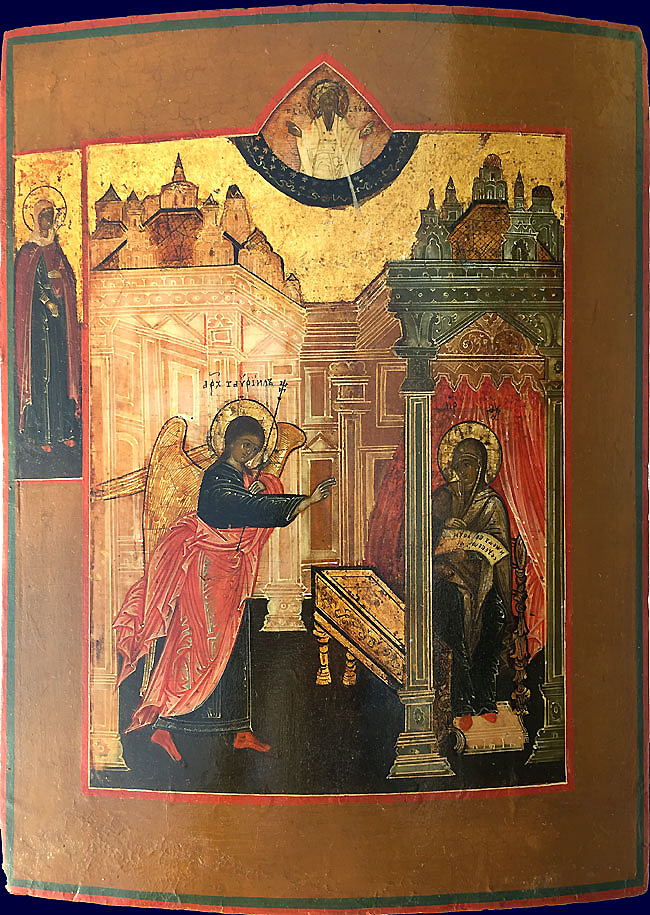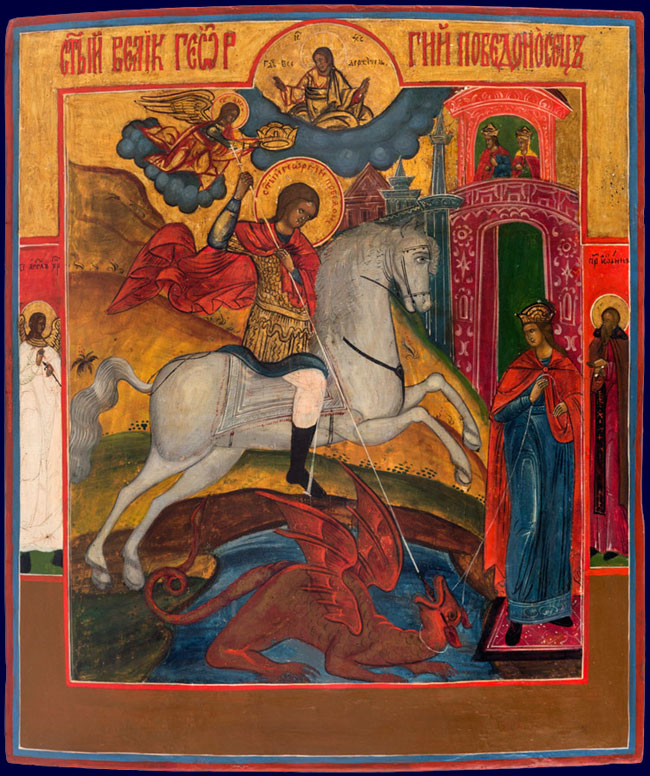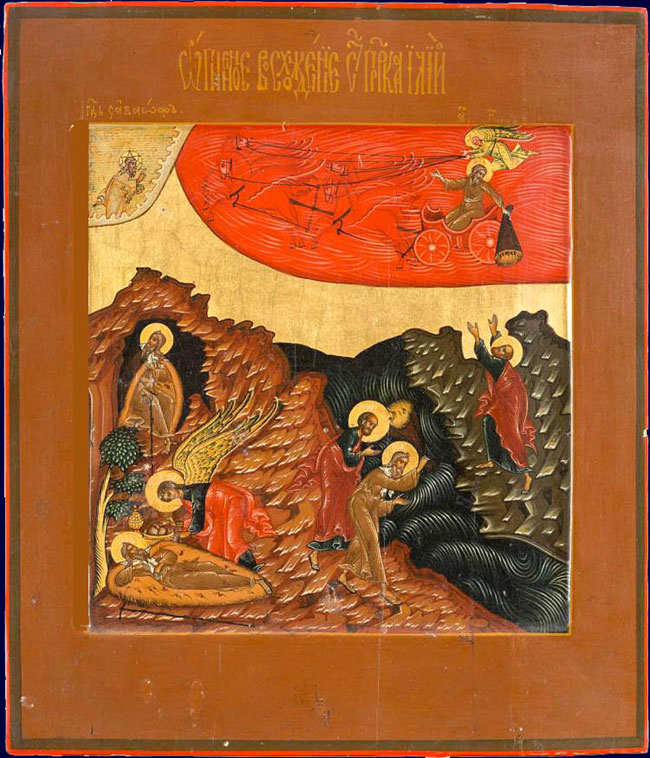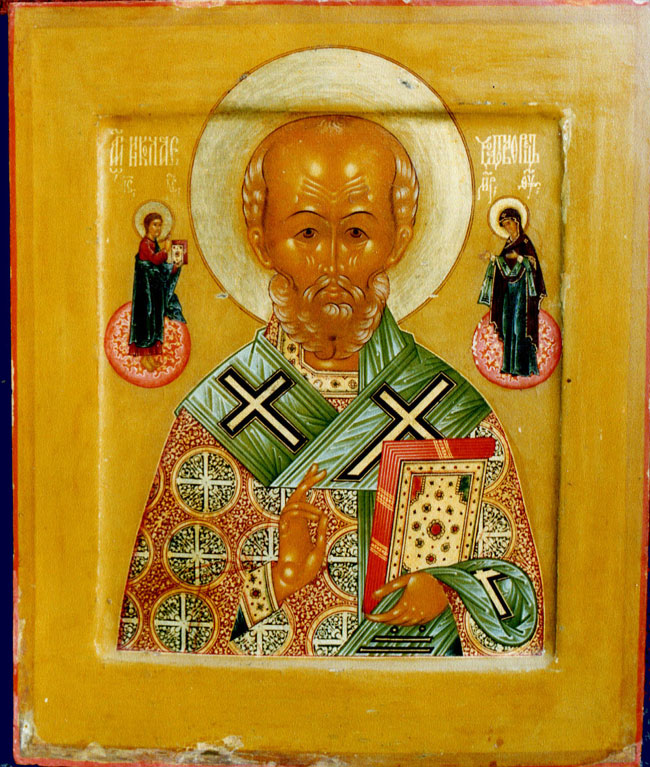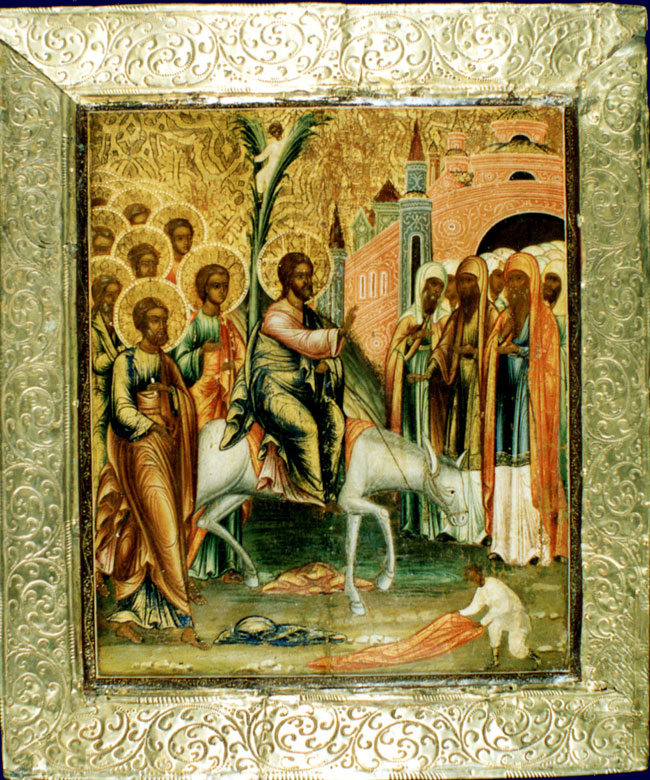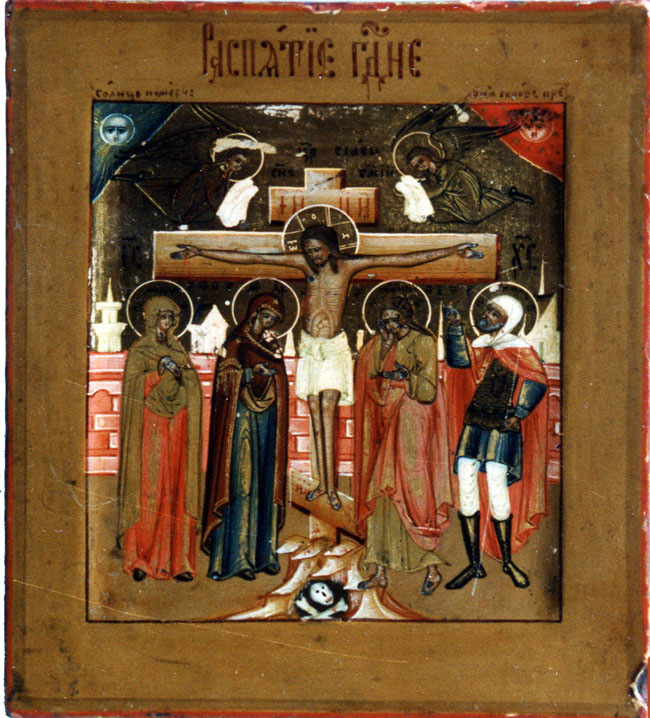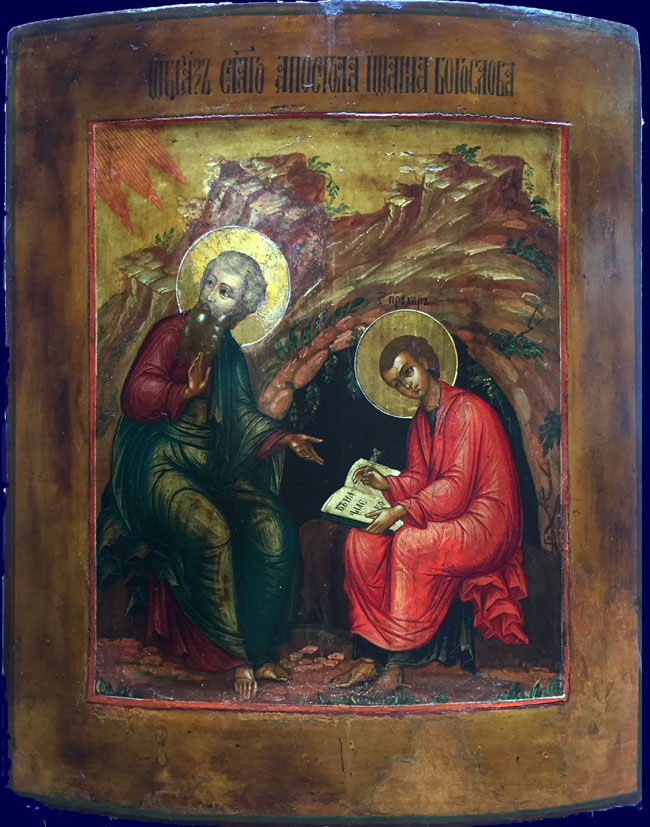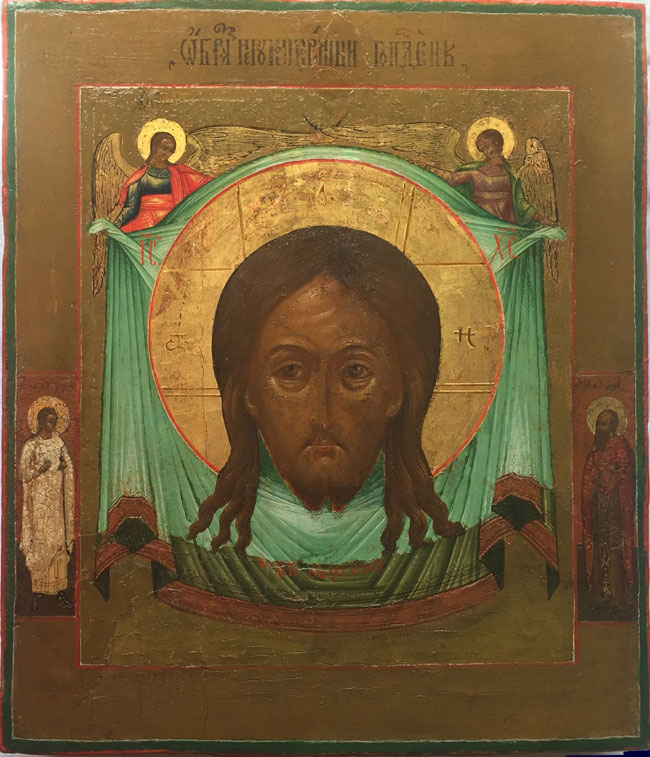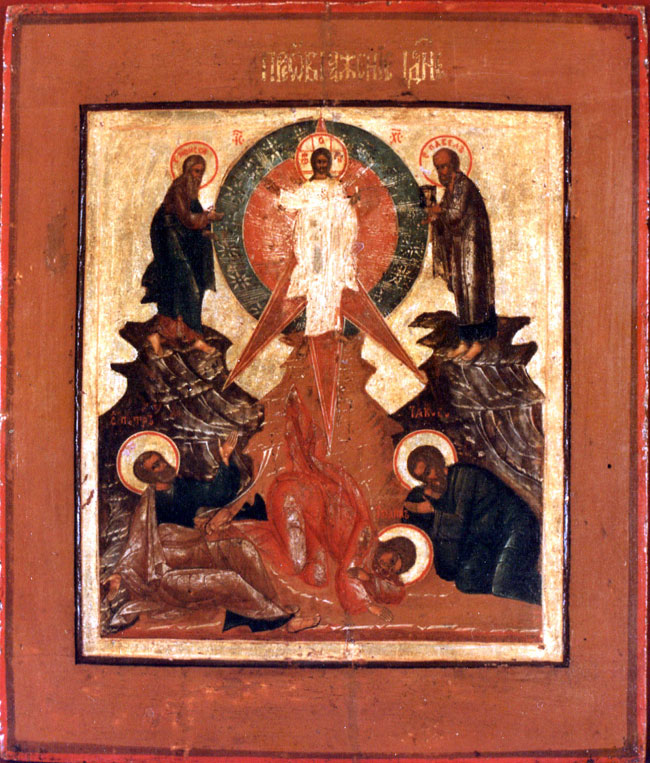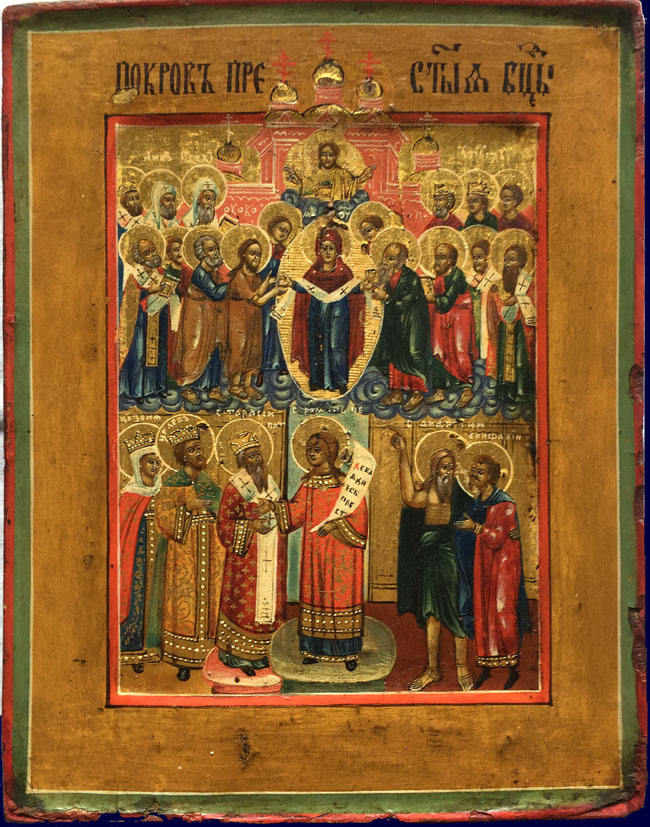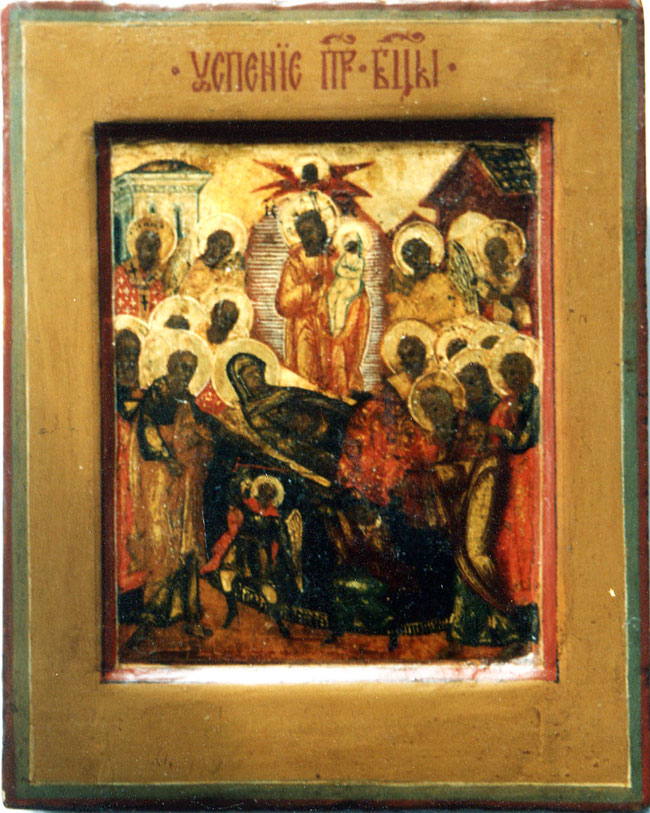MOTHER OF GOD
IWERSKAJA
Russian, 19th century
articlenumber: 403
MOTHER OF GOD IWERSKAJA
Tempera on wood 31 x 26,5 cm Russian, 19th century
The prototype for this icon was once in the hand of a Constantinople widow who hid it in her home during the iconoclast period. In a desperate attempt to save it from desecration, she threw it into the sea where it stood upright and floated away. Many years later it appeared out to sea in a pillar of fire off the Iveron monastery on Mount Athos from which it derives its name. An eremit brought the icon to land and the monks of the monastery built a church for it.
ANNUNCIATION
Russian, ca. 1800
articlenumber: 445
ANNUNCIATION
Tempera on wood 34 x 27 cm Russian, ca. 1800
MOTHER OF GOD FEDOROWSKAJA
Russian, 19th century
articlenumber: 406
MOTHER OF GOD FEDOROWSKAJA
Tempera on wood 36 x 32 cm Russian, 19th century
The icon, attributed to Saint Luke, is said to have been found hanging in an evergreen tree in the area of Kostroma by Prince Vasiliy of Kostroma in1239. The icon was brought into the local cathedral. It accompanied the prince and his army into the victorious battle against the Tatars.
SAINT GEORGE
Russian, 19th century
articlenumber: 435
SAINT GEORGE
Tempera on wood, gold leaf, 45 x 38 cm Russian, 19TH century
Saint Geoorge of Lydda was according to tradition a Roman soldier in the Guard of Emperor Diocletian. After his conversion to Christianity he suffered martyrdom and was beheaded. He is he fighter against the evil and is immortalized in the tale of George and the dragon.
SAINT ELIJAH
Russian, 19th century
articlenumber: 440
SAINT ELIJAH
Tempera on wood 35,5 x 31 cm Russian, 19th century
In the upper part Elias is depicted ascending to Heaven in a fiery chariot surrounded with flames and harnessed to four winged horses throwing his coat to his pupil Elisha. In the lower left corner an angel awakens the Saint and above he is feeded by a raven.
According to the Tradition of Holy Church, the Prophet Elijah will be the Forerunner of the Dread Second Coming of Christ. He will proclaim the truth of Christ, urge all to repentance, and will be slain by the Antichrist. This will be a sign of the end of the world.
SAINT NICHOLAS
Russian, ca. 1800
articlenumber: 410
SAINT NICHOLAS
Tempera on wood 31 x 26,5 cm Russian, ca. 1800
Saint Nicholas, was Archbishop of Myra in Asia Minor in the 6th century. He is venerated as patron of Russia, children and seafarer and the most favored Saint in whole Russia. He is traditionally depicted in the “Pantocrator-position” his right hand delivering a blessing, the open book of Gospels in his left one. On both sides of his head appear Christ and the Virgin Mary who brought him the Omophorion and the book of Gospels into the prison, as the legend tells us.
ENTRY TO JERUSALEME
Russian, 19th century
articlenumber: 411
ENTRY TO JERUSALEME
Tempera on wood, Basma brass 37,4 x 32 cm Russian, 19th century
The Entry to Jerusaleme is the beginning of the cycle of Our Lord’s Passion.Christ, followed by the apostles, is riding on a white donkey to Jerusaleme. The people flood out of the towngates to praise him.
BAPTISM
Russian, 19th century
articlenumber: 416
BAPTISM
Tempera on wood 31,5 x 27 cm Russian, 19th century
John the Baptist stands on the left bank of the river Jordan facing Christ and placing his hand upon Christ’s head as he stands nude in the water giving benediction with his right hand. Above his head the Holy Spirit appears in form of a dove. three angels on the right bank gently bow with covered hands toward Christ, representing the Angel hierarchies.
CRUCIFIXION
Russian, 19th century
articlenumber: 429
CRUCIFIXION
Tempera on wood 12,5 x 10,5 cm Russian, 19th century
Christ depicted crucified upon the cross. At his feet the skull of Adam. At his sides Mary, John and Longinus, above two angel and in the upper corners appear sun and moon.
SAINT JOHN EVANGELIST
Russian, 18th century
articlenumber: 420
SAINT JOHN EVANGELIST
Tempera on wood 34,5 x 29,5 cm Russian, 18th century
Saint John Evangelist is dictating the Gospel to his disciple Prochorus.
MANDYLION
Russian, 19th century
articlenumber: 413
MANDYLION
Tempera on wood 30,5 x 26 cm Russian, 19th century
The theme originates with the legend of King Abgar of Edessa who, being ill, sent his ambassadors to Jesus to obtaine his help. Jesus, who was unable to visit the king at this moment, pressed his face into a piece of linen and gave it to Abgar’s ambassadors. When the king got this he was heald the same moment. On the borders Guardian Angel and Saint Macarius.
TRANSFIGURATION
Russian, 19th century
articlenumber: 418
TRANSFIGURATION
Tempera on wood 31,4 x 27 cm Russian, 19th century
MOTHER OF GOD POKROW
Russian, 19th century
articlenumber: 424
MOTHER OF GOD POKROW
Tempera on wood 22,2 x 17,8 cm Russian, 19th century
The icon illustrates two different events celebrated on the same day in the church calendar ( 14th october). According to the vision granted only to St. Andrew the Holy Fool, who is seen in the icon gesturing, below right together with his pupil Epiphanius, the Mother of God, accompanied by archangels, John the Baptist, apostles, bishops, holy women, monks and martyrs, spreads her veil in protection over the congregation, an open scroll in her right hand. St. Romanos the Melodist, attended by the Emperor Leo together with the Empress and the Patriarch of Constantinople is depicted below center standing on an ambo.
DORMITION OF THE VIRGIN
Russian, 19th century
articlenumber: 430
DORMITION OF THE VIRGIN
tempera on wood 15 x 12 cm Russian, 19th century
The Dormition (Falling Asleep) of the Mother of God is one of the great feasts of the Orthodox Church, celebrated on Aug 15 This feast, which is also sometimes called the Assumption, commemorates the death, resurrection and glorification of Christ’s mother. It proclaims that Mary has been „assumed“ by God into the heavenly kingdom of Christ in the fullness of her spiritual and bodily existence.
MOTHER OF GOD OF THE UNBURNT THORNBUSH
Russian, 19th century
articlenumber: 425
MOTHER OF GOD OF THE UNBURNT THORNBUSH
Tempera on wood 17,8 x 14,5 cm Russian, 19th century
Mother of God, is shown at center within a four-pointed blue star upon a red star holding the Christ Child on her arm. In the four points of the red star are the symbols of the Four Evangelists. In the blue star and in the petals against which the red and blue star are set, angels are depicted, representing the virtues and the elemental powers.



